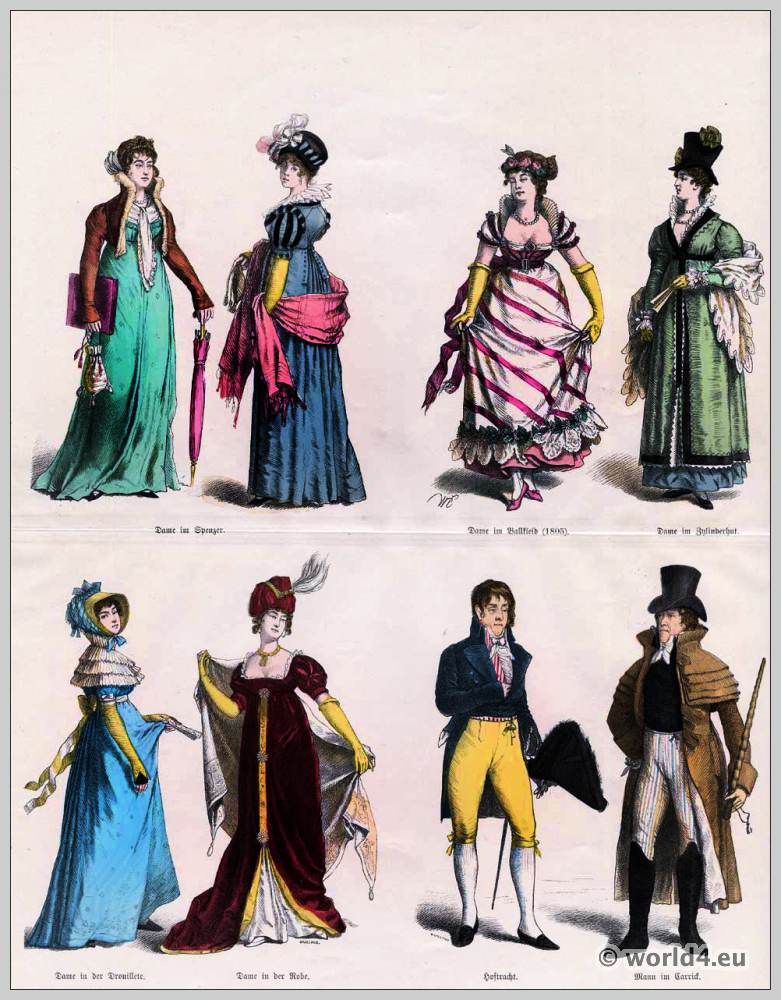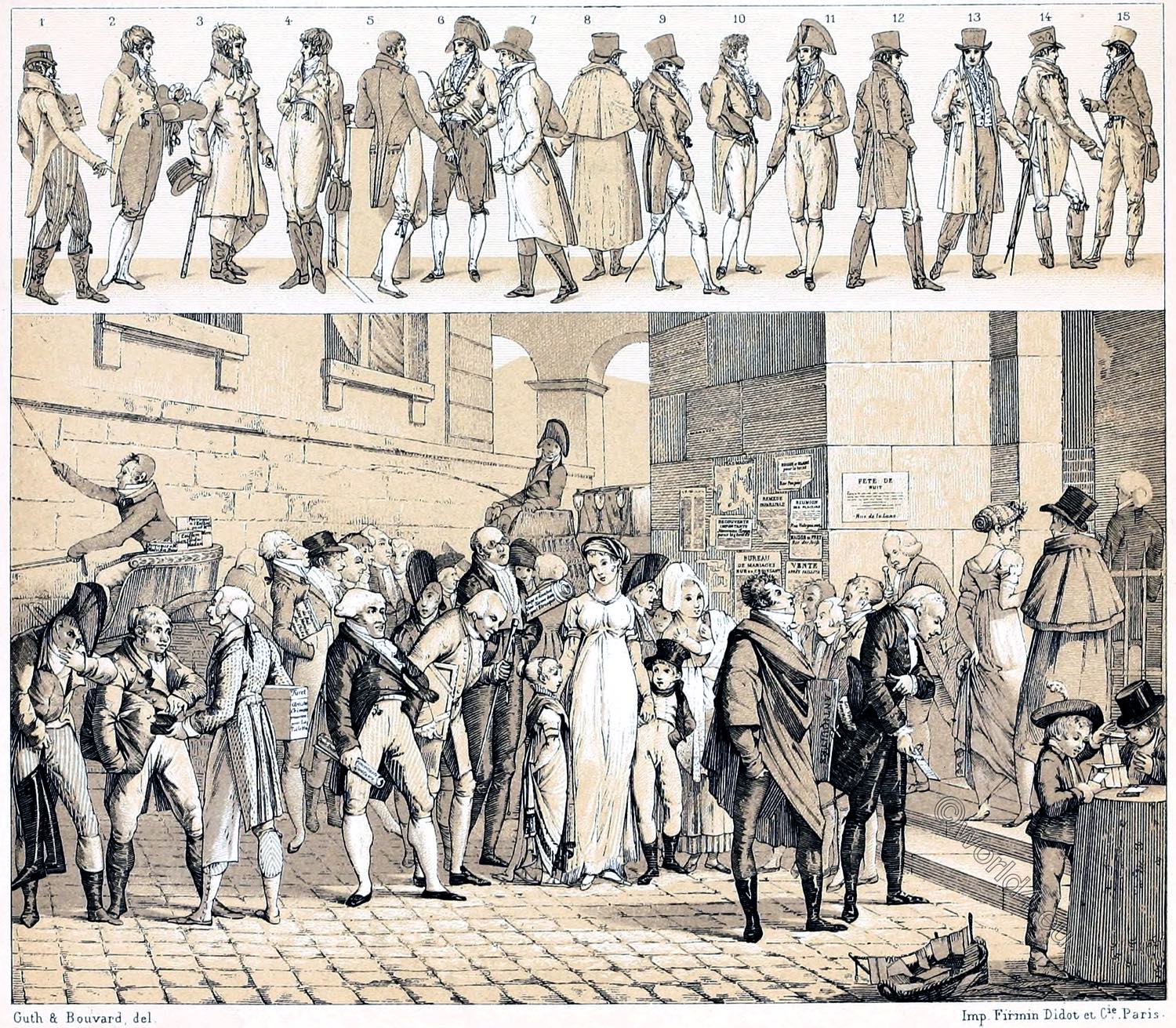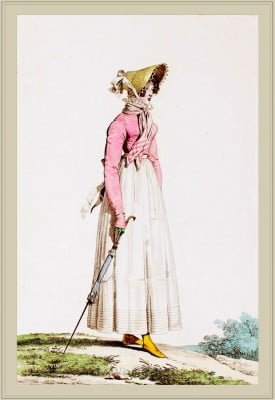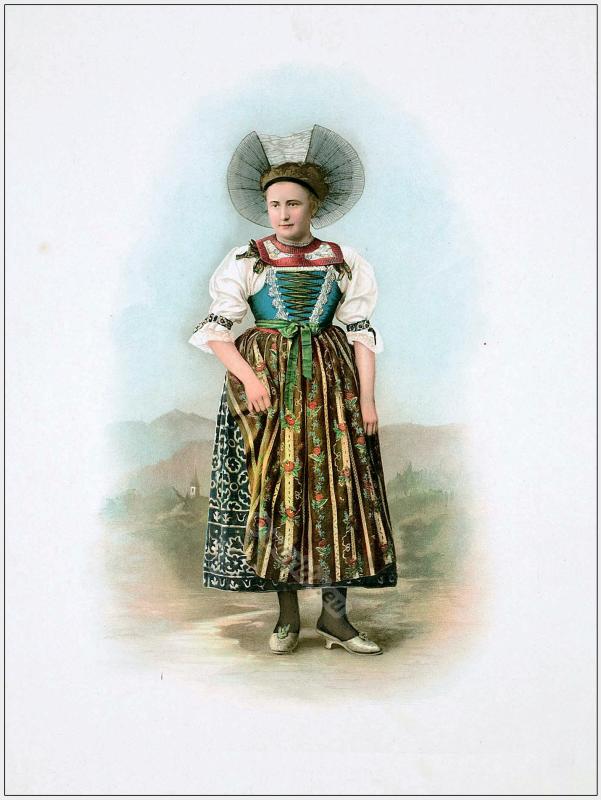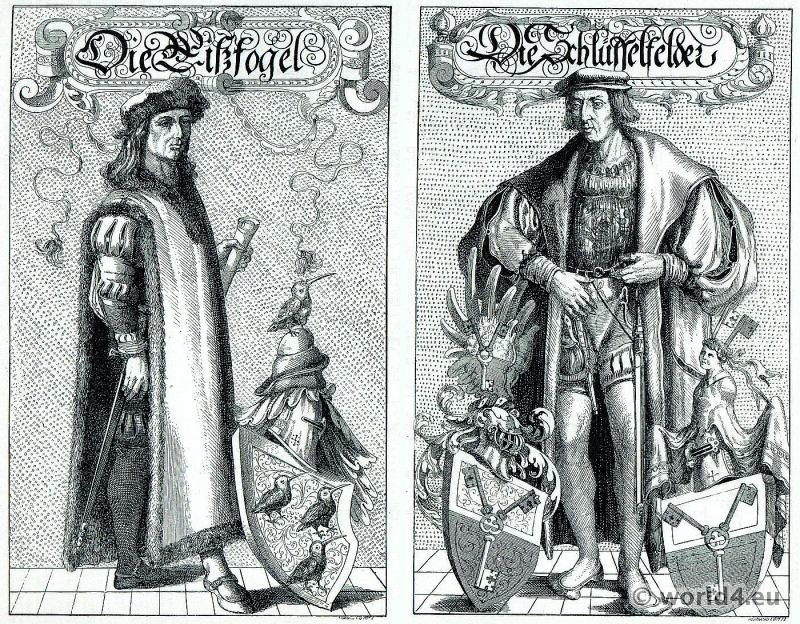First decade of the 19th century.
First Empire, German Biedermeier.
Top row left: Women in spencer. Right: Lady in a ball gown, 1805. Lady with cylinder hat.
Bottom row left: Lady in Dronissete. Lady in Robe. Right: German court dress. Man in Carrick (Coachman coat. The actor David Garrick let himself customize this jacket in the 18th century as the first: many, superimposed pelerines should protect the English landed gentry, and later manorial coachman from rain and moisture.).
Source: On the history of costumes. Münchener Bilderbogen. Edited by Braun and Schneider 1860.

